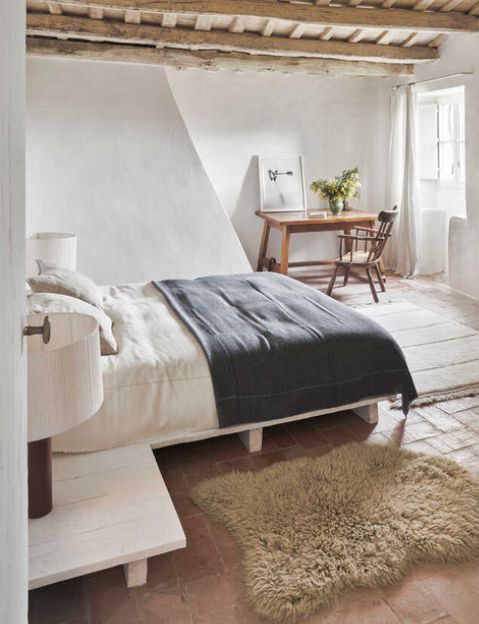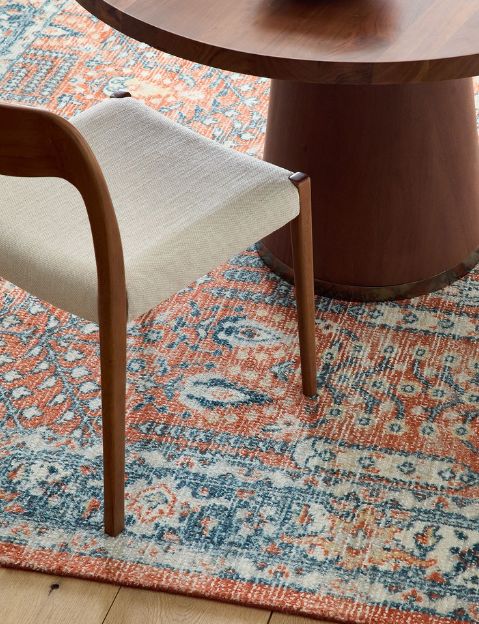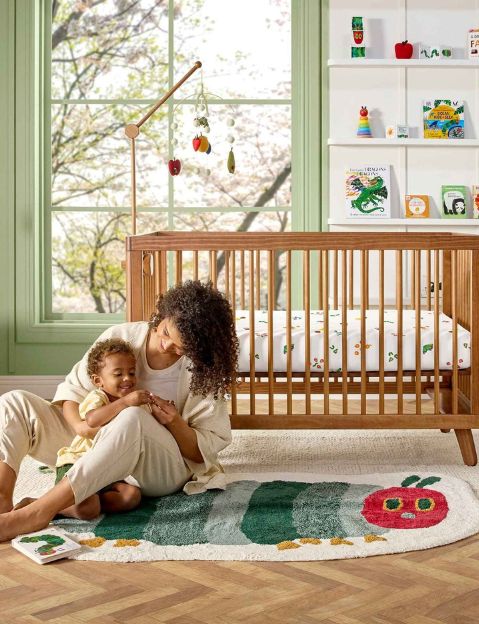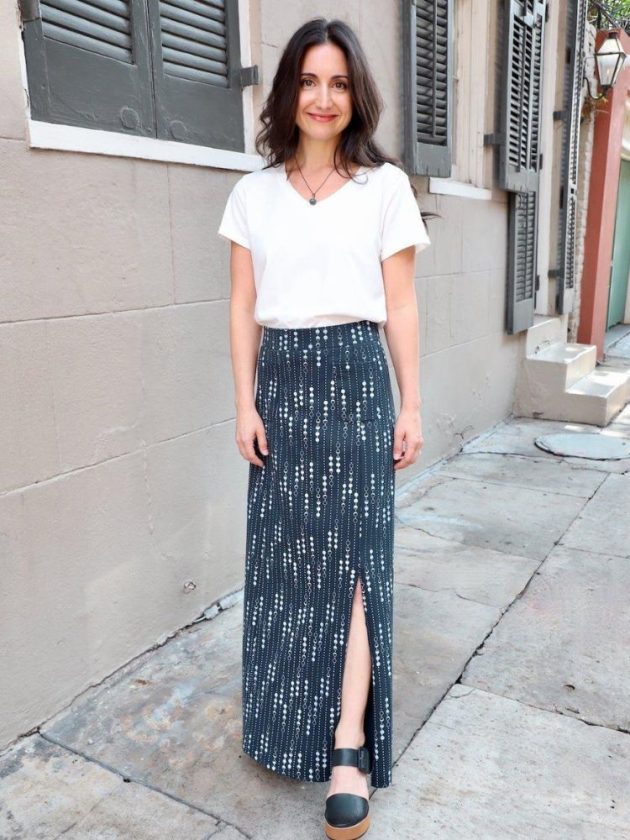The Burning Earth is Yale history professor Sunil Amrith’s fifth book, and his first that focuses his academic eye on the climate crisis.
“As a citizen and then as a parent,” he says, “the climate crisis just became unavoidable in my mind.”
His first books, notably Crossing the Bay of Bengal and Unruly Waters, focused on the history of migration and ecology in Southeast Asia. The Burning Earth takes a global tack, covering the history of the climate crisis from hundreds of years ago, when the Industrial Revolution ignited the mass commodification of natural resources, to now, with the elimination of CFCs and recent climate tech. He sees history through the lens of human needs and desires, and specifically, the luxurious wants of a small slice of elites.

Sunil Amrith is the Renu and Anand Dhawan Professor of History at Yale University, with a secondary appointment as Professor at the Yale School of the Environment.
“The desires of a small elite, and the violent pursuit of inequality through empire, has turbocharged our impact on the planet,” Amrith says. As he writes in the prologue:
I can no longer separate the crisis of life on Earth from our concerns with justice and human freedom that inspired me to become a historian in the first place.
What is the main focus of the book?
The core question in The Burning Earth is really: How much is human freedom dependent on the destruction of our planet? I do not think that human flourishing necessitates the sheer and irreparable harm that we have done to our planet. I think a lot of that has been driven more by the desires and the consumption of a small elite amongst human beings.
You write about need, want and desire and how it relates to the climate crisis. How have those base human traits contributed to the climate breakdown?
I see two long-term paths towards our climate crisis. One is the story of human need. Food and shelter account for a significant part of our impact on the planet — the search for food and shelter, both of which are still very unequally accessed. And that is a long-term story, that the search for food contributes not just to greenhouse gas emissions, but overwhelmingly to biodiversity loss.
The second story we need to tell is that for at least 500 years, the desires of a small elite, and the violent pursuit of inequality through empire, has turbocharged our impact on the planet. It is the vast and disproportionate resources consumed by those with wealth and power in the world. Their identity has changed over time. For several hundred years, it was mostly Northern Europeans. And now that group of people is certainly much more distributed across the world.
You write in the book that elites looked at groups of people who are close to nature as being less human.
I think one of the questions we ask ourselves as we face this climate breakdown is, how did we ever come to believe that the health of the planet didn’t matter to all of us? And yet I think that there has been a period in global history where proportions of people around the world have acted as if it wasn’t true – that we could disregard the health of rivers and forests and simply consume at any rate we chose. That is a mentality that I do also associate with a mentality that imposes a hierarchy on other human beings.
If you look at, for example, the early colonization of the Americas, the language that the Iberian colonizers used to talk about Indigenous people is very often: they are close to nature. They are not fully human like we are. That legitimizes plunder and exploitation and violence, but it also legitimizes mass deforestation and extraction.
Was there any way, historically, to stop the inevitable march towards our climate crisis?
The motivations that are driving people to want to expand their lifespans, to improve the conditions and the security with which their families live – I never want to lose sight of those kinds of baseline human aspirations.
There are deep human dreams which you can see shared across cultures to simply want one’s descendants to have a better life, to want one’s family to continue. I do see that there is a progression in human beings’ ability and power to mold their surroundings, to make those surroundings more hospitable or more habitable for the human societies.
Then there are parts of the story which I think weren’t inevitable. There was nothing ordained about plantation production, for example, which is a very particular kind of cultivation which has to do with exploiting nature as quickly as possible for rapid gain. I think that is a very specific kind of innovation.
I think there are technologies that could have had multiple different kinds of uses. And what we’ve tended to see is that their use has been towards maximum extraction.
You write about silver mining and sugar plantations. How were these some of the earliest environmental catastrophes?
There’s no question that silver mining in the Americas was an environmental catastrophe, and we now have archaeological and genetic evidence that suggests just what a catastrophic impact that had on the health of workers. It was the use of mercury in extracting silver that was so devastating to both the landscape and above all to people’s health. That silver is at the root of what becomes a global economy.
One could probably make the argument that no single crop has caused greater harm than sugar both to human beings and to nature. Sugar began as a very, very rare luxury. It was treated as one of the fine spices in medieval Europe. And it’s only when you start to get large-scale plantation production combined with the social and economic transformations of early modern Europe that it becomes an item of mass consumption.
What effect did large scale steel and iron production have?
It’s largely a 19th century story. The age of industrialization coincides exactly with the fossil fuel era, because if we begin with coal in the second half of the 18th century, we start to see widespread use of coal first in England, then in northwestern Europe and in North America.
I think what changed more than anything else is scale – both the scale of resources that are needed for factory production, and the scale of impact that can be had. I think the story of the railroads is a classic example of this. One of my favorite works of environmental history is Bill Cronin’s book Changes in the Land, which shows how the city of Chicago really reshapes the entire American Midwest. And it does so through the rail lines. Suddenly, Chicago’s markets and exchanges become accessible. And that hastens the destruction of forests, that hastens the expansion of wheat production and monocrop production. And I think we see similar stories all over the world, which is what happens is that as people can travel further, as goods can travel further, you start to get global markets for commodities. And that pushes forward the commodification of nature, the idea that this is not a forest, this is timber, that shift in mentality.
You describe how the “war machine” is a mechanism of climate destruction.
That is the part of the book that was the biggest surprise to me. I did not expect that I would conclude that of all the forces driving climate breakdown, warfare is possibly number one. I think the two world wars came to strike me as being pivotal transformative moments, not just because of the scale of resources which went into both of those wars, but also because of the scale of destruction that those wars then made possible, culminating in atomic weapons by the end of the second world war.
Military emissions are not counted in most of our climate targets and most international contributions that have been agreed to. The best estimate we have is that military missions account for about 5% of greenhouse gas emissions, but that is a guess because we don’t know.
You write about the data project of 1957 and 1958, one of the first climate data projects. Tell me about the through line between that and the sheer amount of data we have now.
This is the International Geophysical Year, and it was this year that the Mauna Loa Observatory was set up in Hawaii, which is, to this day, sort of the gold standard that we have for measuring cumulative concentrations of carbon dioxide in the atmosphere.

The Mauna Loa Observatory in Hawaii in 2008. Ken Dewey / University of Nebraska-Lincoln School of Natural Resources
This data came during the height of the Cold War. This project is drawing in countries from both sides, drawing in countries that don’t necessarily get along. This is the data that first makes us aware that we are living through a period of unprecedented climate change.
With the acceleration the amount of data today, does it not seem to reason that more data would help our imperiled planet?
More data is undeniably important to climate scientists as they make projections and formulate their models. But more data hasn’t necessarily led to more consensus. More data has not necessarily changed the overall narrative about climate change. I think the data is essential, but I’m not sure that we’re at a point where more data is going to change more people’s minds. Those are political questions, those are cultural questions, and those are much harder to shift.
Why won’t more – and better – data change more people’s minds?
Firstly, I think in the U.S. more than anywhere else, there has been a politically motivated skepticism of that data. We know that the fossil fuel companies have been directly involved in promoting that sort of distrust all over the world. We’re in a broader populist moment of distrust of expertise. That is one reason why I think more data won’t necessarily change people’s minds.
Another is that data is complicated, and the way in which climate scientists and other earth scientists think about uncertainty doesn’t necessarily translate very smoothly into broader general consciousness.
And finally, the data is sometimes on a scale that is just unfathomable for all of us, so detached from our everyday lived experience, that I think we need more translation. And maybe that is where a creative artist, or a novelist like the great Richard Powers, have had more impact on shifting people’s awareness and consciousness perhaps than more data.
As an educator at Yale, how did researching and writing this book change what you bring to the classroom?
I’ve been teaching environmental history for about 15 years. And there are classes I’ve taught where the questions students have raised, the projects they’ve done, the conversations we’ve had in the classroom have just stayed with me. So, it’s not just what I bring to the classroom, but really what I get from the classroom that is translated directly into this book.
I think we need to bring the environment into everything, not just into environmental history, but I think we need to be thinking about these questions across our humanities curriculum. I mean, in that sense, that’s partly what I was trying to do with The Burning Earth, which was to say, let’s not separate the environmental story from perhaps more familiar stories about the rise and fall of empires, about unfree labor, about migration, about global transformations. And I think more broadly, that’s what I would love to see happen, which is a kind of weaving in of the more-than-human, the planet, the ecology into how we study literature, into how we study philosophy.
Might one of the hopes of this book be for people to look at the world around them and to realize that everything that’s made here possibly comes from a place of environmental destruction?
I would love readers of The Burning Earth to make connections between the material that I present, especially that which is most unfamiliar in their everyday lived experience. My aspiration is not to make people feel guilty. Quite the opposite. I want to give readers the impression that everything is interconnected.
This is about looking at choices with a sense of hopefulness that that means that a shift in consciousness or new forms of collective action can bring about change and perhaps even bring about change quite quickly.
As a historian, any predictions for the future?
I think we are living through a period, you know, just this decade, I think, of such unpredictable change that I think there are so many different trajectories that could lie before us, some of them terrifying, and some of them more hopeful.
The post ‘Everything Is Interconnected’: Author and History Professor Sunil Amrith on Facing the Climate Crisis appeared first on EcoWatch.
https://www.ecowatch.com/sunil-amrith-interview-burning-earth-ecowatch.html
Green Living
50 DIY Christmas Presents Anyone Can Make
Last Updated on November 21, 2025
If you’re on the handmade Christmas kick this year, you’re not alone. So am I!
I’m choosing presence over presents this year and bringing back the 90s Christmas I loved as a kid – simple, crafty, low pressure, and full of small moments that feel meaningful.

If you want to gift thoughtfully, and without breaking the bank, these DIY Christmas presents are for you. There’s something for everyone on this list – whether you prefer easy or complex DIYs.
I’ve included all kinds of DIYs – beauty, cooking, fashion, and practical gifts alike. Best of all? Many of these tutorials are zero waste (or close to it).
what are good homemade Christmas gifts?
Good homemade Christmas gifts include consumable items, like homemade nut butters, vanilla extract, or jams. But not all homemade gifts are edible – you can also make items like bath bombs, candles, body scrubs, beeswax wraps, and so much more.
If you’re extra crafty, you could even make wooden gifts (like shelving or tablet holders), ceramic items (like mugs or jewelry), or knitted/crocheted pieces (like blankets, scarves or hats).
It all depends on your level of skill, time at your disposal, and ingredients/materials you have access to.

what are good inexpensive Christmas gifts?
Some good inexpensive Christmas gifts are DIY cornstarch ornaments, handmade body or lip scrub, seasoned salt blends, and homemade treats (like these chocolate chip cookies or vegan sugar cookies).
And never forget to hit up your local thrift store – you can find so many great items that would make affordable gift baskets!
Wrapping DIY Christmas gifts also doesn’t have to be expensive. Reusing gift bags and ribbons from last year, upcycling packaging paper, or even repurposing a scarf for furoshiki wrap are all low-waste and affordable!
RELATED: Gift Wrapping: How to Keep It Easy, Eco and Chic
how can I make a last minute gift?
You can make a last minute gift by getting crafty using the materials you have on hand!
For example, if you have a cardboard box, why not try making an upcycled cardboard dollhouse, vehicle, or pirate ship for a child? For adults, a DIY storage container or a shoe rack works.
One of my fav last minute gifts is scented bath salts in an upcycled glass jar – just a little Epsom salt and essential oil blends will do the trick!
Here’s my list of DIY Christmas gifts – something for everyone and every skill level.

- Bath salts
- DIY makeup like mascara/eyeliner, or lip to cheek
- Bath bombs
- Lip scrub
- Lip balm
- Face mask
- Body lotion
- Natural perfume
- Dry shampoo
- Shampoo bar
- Body soap
- Deodorant
- Rose water toner
- Hand-poured coconut/soy/beeswax candles
- Simmer pot in a jar
- Cookie, brownie, soup mix or hot cocoa mix in a jar
- Handmade seasoning blends
- Vanilla extract
- Vegan caramels or plant-based butter wrapped in compostable parchment paper
- Herb or citrus infused olive oil
- Peanut butter + jam
- Beeswax wraps
- Apple or pumpkin butter
- Sourdough or no-knead artisan bread
- Finished embroidery hoops
- Embroidered pillows, tote bags, clothes or cloth napkins
- Sewn cotton rounds
- Knitted scarf, hat, gloves, sweater, or blanket
- Hand warmers
- Quilt blanet, quilted coat or quilted wallet
- Tie dyed secondhand silk scarves, clothing or sheets
- Hand painted or drawn artwork
- Air dry clay paint palette
- DIY wooden frame for paintings or print photos
- Handmade ceramics (mugs, chawan, chasen holder, vase, spoon rest, etc.)
- Woodworked items (birdhouse, shelving, bookcase, wall guitar mount)
- Carving wooden bowls by hand
- Natural branch coasters
- Plant propagations in one of these DIY planters
- Seed balls using native seeds
- Handwoven baskets or bowls
- Macrame produce bag
- Macrame plant hanger
- Fabric paper mache bowls
- Upcycled paper earring jewelry
- Clay earrings
- Handmade plush toys
- Felt ‘food’ toys
- Wooden toys (like vehicles, blocks, or dollhouses)
- Knit or crocheted baby clothes
What do you think of these DIY Christmas presents? Let me know in the comments!
The post 50 DIY Christmas Presents Anyone Can Make appeared first on Going Zero Waste.
Green Living
8 Best Non Toxic Rugs For a Sustainable Home
Last Updated on November 6, 2025
Did you know most rugs are made from polyester, aka plastic? Arguably, a good chunk of our furniture and home decor is nowadays.
And lets not forget – rugs can get a lot of foot traffic. If it’s made from polyester, chances are those plastic fibers are going to shed and get onto us. Or worse, in us.

Some of the links in this post are affiliate links; for more information please see my disclosure policy.
Microplastics have been found in human feces, blood, and even placentas. And according to a study from Stanford University, those who had microplastics in their plaque had a higher risk of heart attack, stroke and death than those who didn’t.
On top of this, 5 billion pounds of rugs go to waste each year – that’s 2% of total US landfill. And if they’re made from plastic? They won’t biodegrade.
It’s more important than ever to reduce our exposure to microfibers where we can. Which is why I’ve rounded up the best non toxic rugs on the market.
what is the least toxic rug?
The least toxic rug will have sustainable materials and use no harsh chemicals (like PFAs) in their production.
Here’s what to look for when purchasing a non-toxic rug:
- Sustainable materials, such as organic cotton, jute, sisal or wool
- Low-waste packaging + delivery
- Natural, non-synthetic dyes
- Third-party certifications like OEKO-TEK, Fair Trade, GOTs
- Easy to spot-clean or machine wash
- Available in various styles, patterns + colors to suit your needs
do all rugs have PFAS?
According to Department of Toxic Substances Control (DTSC), only four samples of 201 carpets and rugs were found to contain more than 100 parts per million in their fibers, indicating PFAS were intentionally added to the products.
However, while PFAs may not be a huge concern for rugs, microplastic pollution is, specifically if your carpet is synthetic. Your best bet is to check the material your rug is made from and choose natural fibers whenever possible.
what is the best non-toxic rug for nursery?
The best non-toxic rug for a nursery would be made from natural materials like wool and organic cotton (which are soft on baby’s skin).
I recommend also checking for natural latex for the rug backing and underlay pads. Brands on this list that offer kid-friendly sizes and patterns include Lorena Canals, Nestig, Quince, and Loomy (more on each below).
what brand of rugs are non-toxic?
The brands of rugs that are non-toxic are listed below. I’ve gone ahead and highlighted some of my favorite features of each brand, but it isn’t an exhaustive list. Be sure to check out their websites for more information.

1. hook and loom
- Various rug sizes, shapes + patterns
- Made from GOTs certified organic cotton, recycled cotton + wool
- No dyes or harmful chemicals
- No latex

2. lorena canals
- Various rug sizes, shapes + patterns
- Handmade by artisans using recycled materials like organic cotton + wool
- Nontoxic dyes
- Make your own option
- Machine washable
- Rugcycled line made from recycled materials in their own factory

3. sabai
- Field rug
- Woven using wool + jute
- Available in 3 varying sizes
- Rug pad add-on available for reduced movement
- Certified B Corporation

4. quince
- Various sizes + patterns, best known for vintage-inspired looks
- Made from natural materials like wool, jute, + cotton
- Handcrafted by artisans in India
- Transparent pricing practices
- Compostable poly bags + recycled plastic mailers

5. west elm
- Rugs for every area of the home, in varying sizes
- Made from wool, jute, hemp, cotton, TENCEL + recycled materials
- Handspun by skilled artisans in India

6. nestig
- Area + washable rugs made with fun shapes/designs for babies + kids
- Washable rugs made with organic cotton + nontoxic dyes
- Area rugs made with cotton + each colored element crafted from recycled cotton
- Handmade in Brazil

7. cold picnic
- Various rug shapes + sizes, abstract patterns + bold colors
- Made with wool, bamboo silk, cotton, hemp, + deadstock materials
- Designed in a Brooklyn studio, handmade by artisans in India
- Committed to reducing packaging waste where possible

8. loomy
- Various rug sizes, shapes + patterns
- Made from banana silk, hemp, jute, recycled fiber, viscose, or wool
- Any colored yarn dyed using low-impact techniques
- Handcrafted by indigenous artisans
So what do you think of these non toxic, sustainable rugs? Let me know in the comments!
The post 8 Best Non Toxic Rugs For a Sustainable Home appeared first on Going Zero Waste.
Green Living
Our Picks for the Top Black Friday and Cyber Week Sales From Sustainable Brands
It’s not easy shopping consciously during the holiday season — especially during Cyber Week. It’s a time of year notorious for overconsumption, impulse buys, and purchases that are bound for the landfill just months (or even days) later.
But I also don’t believe that sustainable living just looks ONE way. These sustainable and ethical Black Friday discounts can be a way to access better products for more affordable prices. And a great way to support small businesses over big box stores during what is often the most important time for businesses.
Here are some things to keep in mind to engage with Cyber Week and Black Friday more sustainably!
1. A “deal” isn’t a “deal” if we’re buying things we won’t actually use and enjoy long-term (it’s easy to get caught up in the thrill of a deal and buy something that we totally wouldn’t have bought otherwise — been there, done that!)
2. Our whole platform is about challenging overconsumption, but if we want to intentionally purchase some ethical clothing or eco-friendly gifts, these sale days can be a great opportunity to support conscious brands more affordably.
3. It’s worth asking some additional questions and taking some extra time to make these purchasing decisions because the dopamine hit of a good deal can skew our decision-making abilities!
4. If the whole Cyber Week affair stresses you out or you’re feeling pressured to buy more than you originally intended, know that you can step out at any time. Turn off your notifications and get outside and/or spend time with loved ones! You do not need to buy ALL (or any) of your holiday gifts during this week.
But if you’re ready to make a mindful investment in something for yourself, or have a long list of gifts and you want some support in shopping small and consciously, check out this list of the best sustainable and ethical Black Friday and Cyber Week deals going on. Plus, we featured some companies opting out of deals and doing donations instead.
Transparency note: we only feature brands that meet high standards for sustainability we love, that we think you’ll love too. Some of these links are affiliate links, meaning if you purchase via these links we may earn a commission, which helps us continue this site. Thanks for your support!
Here Are Our Top Picks for This Season:
1. Passion Lilie
With elevated womenswear and menswear that pop in prints and weaves, this woman-owned brand champions artisanal techniques like hand block printing and hand weaving to create the most flattering styles that’ll withstand trends.
The brand carefully creates its pieces to make sure they are biodegradable at the end of their lifecycle by using natural fibers like recycled cotton and organic cotton that are treated with organic dyes. Since artisanal craft plays such an important role in their design ethos, Passion Lilie ensures all producer groups they employ are either Fair Trade certified or employ its core practices.
Sale Details: 30% off site-wide with free shipping over $125. Use coupon code BFCM2025. Valid November 26 – December 3
2. Mightly
Founded by four mothers who wanted to create comfortable, long-lasting clothing for active children – minus the toxic chemicals – Mightly is setting the standard for consciously crafted kidswear that takes fun designs just as seriously. Don’t just take our word for it, scroll their site to find Mightly’s delightfully colorful collection of clothing for babies, toddlers, and kids in prints that’ll add a spring in your little one’s step.
Every piece is made using Global Organic Textile Standard certified organic cotton and is sewn at Fair Trade certified factories, ensuring every step of production is responsible.
Sale Details: Tiered discount available sitewide November 25 – December 1.
- 15% off orders of $75+
- 20% off orders of $150+
- 30% off orders of $250+
3. MasayaCo
If you’re seeking artisanal furniture that’ll breathe some character into any space, then look no further. MasayaCo creates a range of handcrafted pieces from reforested teak wood that supports artisans and has an enduring quality. You’ll find versatile pieces to suit nearly every room of your home — and even something for outdoor settings that’ll withstand the elements owing to their naturally water-resistant teak.
MasayaCo has built a restorative model where they grow and manage their own forests, harvesting mature trees for furniture while 30-40% of the reforested land is preserved as a native forest.
Sale Details: 20% off all items and up to 40% off on select items November 19 – December 4. All discounts auto-applied at checkout.
4. Medley
For those who prefer plush, elevated furniture with an inviting appeal, Medley will make you feel right at home with their pieces. Ready to insert a mid-century modern touch into any home, they use time-honored building techniques to offer lasting furniture that ages beautifully.
You can lounge easy on Medley’s pieces knowing that right from the filling to the upholstery, and wood, the materials they use are tested by certifying bodies like OEKO-TEX® STANDARD 100, CertiPUR-US®, and GREENGUARD Gold, to name a few, which indicate the materials have been tested to be free of harmful substances and meet the most stringent standards for low chemical emissions.
Sale Details: TBA | November 28 – December 2
5. Sabai
Nothing adds life to a living room quite like a cozy and inviting sofa. And at Sabai, you’re bound to find a cushy one that’ll serve itself as a centerpiece for the heart of your home. Sabai is on a mission to make sustainable furniture that’s affordable, repairable, and circular.
The company has a range of sofas and loveseats made from recycled and upcycled materials in non-toxic finishes that are completely modular, so they can accommodate and adapt to your changing needs. All of their pieces are created on a made-to-order basis with the option to order up to six swatches free of charge for the discerning decorators.
Sale Details: TBA
The following Black Friday and Cyber Week sales from sustainable brands are sorted by category!
Sustainable Homewares & Furniture Sales
Avocado
Non-toxic brand with low-waste manufacturing offering your bedroom a sustainable upheaval with organic mattresses and bedding
Discount: TBA
Urban Natural
Sustainable home decor and furniture retailer with top brands like Copeland, Cisco Home and East Fork
Discount: TBA
Boll & Branch
Fair trade and organic-certified bedding and bath products
Discount: TBA
The Citizenry
Artisan-made home goods and furniture
Discount: TBA
Coyuchi
Sustainable bedding, bath, home goods, and pajamas made with GOTS-certified organic cotton or regeneratively-sourced fibers
Discount: TBA
My Green Mattress
Non-toxic organic mattresses, bed frames, and accessories
Discount: TBA
Saatva
Eco-friendly memory foam mattresses and organic bedding
Discount: TBA
Savvy Rest
Organic mattress and non-toxic furniture retailer using sustainable natural materials
Discount: TBA
SOL Organics
GOTS-certified organic cotton bedding
Discount: TBA
Ethical & Sustainable Fashion Holiday Sales
Christy Dawn
Slow fashion brand with dreamy dresses and other clothing made responsibly from deadstock fabric, organic cotton, or regenerative cotton grown by Oshadi in India
Discount: TBA
Kotn
Responsible clothing brand offering everyday essentials made from natural fibers with a traceable origin
Discount: TBA
Mate The Label
Loungewear and basics made with non-toxic and organic materials
Discount: TBA
Monica Vinader
Jewelry made from 100% recycled gold vermeil and 100% recycled sterling silver
Discount: TBA
Organic Basics
Eco fashion brand with intimates, basics, activewear and lounge apparel made with earth-minded fabrics
Discount: TBA
PACT
Organic cotton basics and loungewear plus home textiles made in Fair Trade Certified factories
Discount: TBA
Tradlands
Nap dresses, balloon pants, and all things cozy, crafted in sumptuous natural fibers and deadstock materials
Discount: TBA
The RealReal
Luxury fashion consignment site for finding pre-loved designer apparel and accessories
Discount: TBA
The Knotty Ones
Timeless and stylish hand-knitted knitwear made with biodegradable yarns crafted by female artisans living in rural Lithuania.
Discount: TBA
Thesus
Ethical footwear brand with vegan boots and sneakers made from sustainable, traceable materials, including large percentage of recycled materials
Discount: TBA
Vestiaire Collective
Luxury fashion resale site
Discount: TBA
tentree
Eco-minded clothing and accessories brand that plants 10 trees with every order
Discount: TBA
ThredUp
Online secondhand marketplace
Discount: TBA
Subset
Organic cotton underwear and bralettes
Discount: TBA
Brook There
Comfy organic cotton undergarments: underwear, bralettes, and nightgowns cut and sewn in the U.S.
Discount: TBA
EILEEN FISHER
Timeless, high quality slow fashion brand with circularity programs
Discount: TBA
HYER GOODS
Wallets, bags, and other accessories made from upcycled materials
Discount: TBA
Whimsy + Row
Eco-friendly Los Angeles-based clothing label with effortless pieces
Discount: TBA
Toad&Co
Eco-friendly men’s and women’s outerwear and casual clothing
Discount: TBA
Reformation
Sustainably-minded apparel brand actively working towards 100% circularity and building a Climate Positive business
Discount: TBA
Clean and Low Waste Beauty
100% Pure
Fruit-pigmented makeup and plant-based non-toxic skincare
Discount: TBA
Activist Skincare
Woman-owned brand creating high-performing vegan skincare that comes in plastic-free and refillable packaging
Discount: TBA
ILIA
Clean makeup brand — personally I love their Limitless Lash and Super Serum Skin Tint
Discount: TBA
Detox Market
Clean beauty and wellness retailer
Discounts: TBA
Henry Rose
Fine fragrances with 100% ingredient transparency; EWG Verified and Cradle to Cradle Certified
Discount: TBA
Kjaer Weis
Natural makeup brand with low-waste refillable packaging
Discount: TBA
Sustainable Cookware, Cleaning & Daily Essentials
360 Cookware
Non-toxic stainless steel cookware crafted in Wisconsin in the U.S.
Discount: TBA
Blueland
Eco-friendly cleaning supplies, including dish soap and laundry detergent
Discount: TBA
Our Place
Non-toxic non-stick pans made in ethical factories; WOC-owned
Discount: TBA
Enviroscent
Non-toxic, cruelty-free refillable home scents
Discount: TBA
XTREMA
Non-toxic ceramic cookware
Discount: TBA
Dropps
Biodegradable laundry and dishwashing pods
Discount: TBA
We’re continuing to update this post so be sure to bookmark it for later!
In the meantime, check out our gift guide: 30 Sustainable and Ethical Gift Ideas for Everyone On Your List
The post Our Picks for the Top Black Friday and Cyber Week Sales From Sustainable Brands appeared first on .
Our Picks for the Top Black Friday and Cyber Week Sales From Sustainable Brands
-
Climate Change3 months ago
Guest post: Why China is still building new coal – and when it might stop
-
Greenhouse Gases3 months ago
Guest post: Why China is still building new coal – and when it might stop
-
Climate Change2 years ago
Spanish-language misinformation on renewable energy spreads online, report shows
-

 Greenhouse Gases1 year ago
Greenhouse Gases1 year ago嘉宾来稿:满足中国增长的用电需求 光伏加储能“比新建煤电更实惠”
-
Climate Change Videos2 years ago
The toxic gas flares fuelling Nigeria’s climate change – BBC News
-

 Climate Change1 year ago
Climate Change1 year ago嘉宾来稿:满足中国增长的用电需求 光伏加储能“比新建煤电更实惠”
-

 Carbon Footprint2 years ago
Carbon Footprint2 years agoUS SEC’s Climate Disclosure Rules Spur Renewed Interest in Carbon Credits
-
Renewable Energy4 months ago
US Grid Strain, Possible Allete Sale













